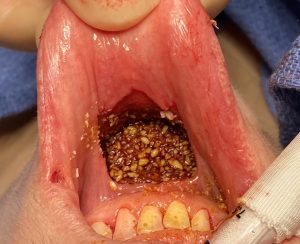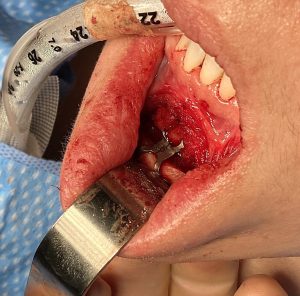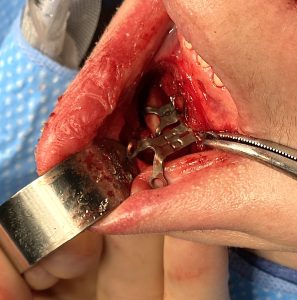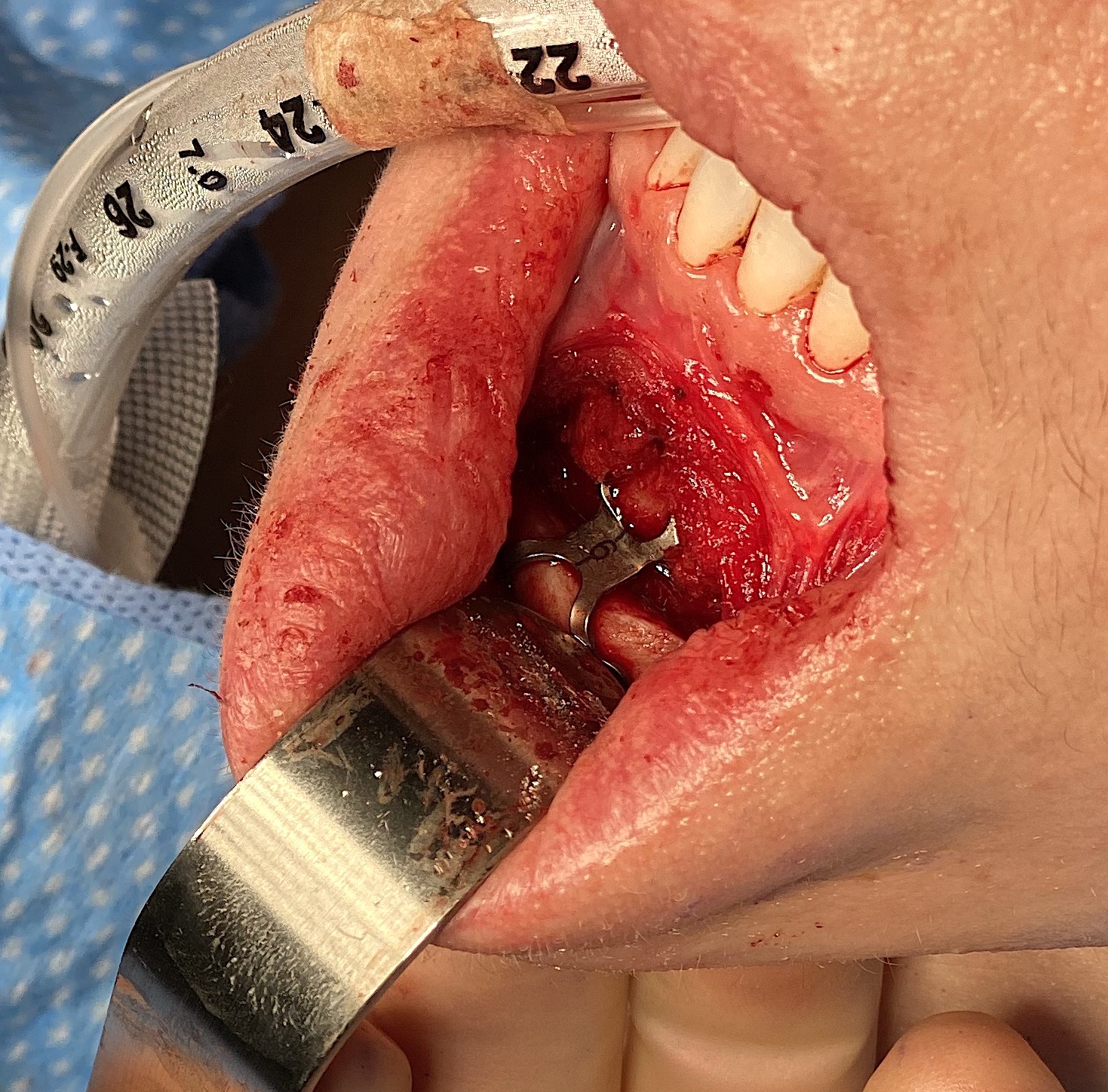Background: The sliding genioplasty for chin augmentation is a procedure that requires a greater commitment from the patient than a chin implant. This is from the perspective of reversibility or modification, it is harder to secondarily change its position than that of an implant. But in actuality it is no harder than the original procedure as it still involves making a bone cut which is done through the original osteotomy line. This secondary cut is through bone that is thinner since the anteroposterior thickness of the chin is now less from the prior advancement.
Most cases of secondary bony genioplasties in my experience are done to lessen the amount of the original advancement. There are cases where patients want more advancement or even to completely reverse it but most are a subtotal sliding genioplasty reversal. The chin is recut and brought back but not all the way.
In a sliding genioplasty advancement I always graft the bony step off using tissue bank or cadaveric bone chips. This not only helps restore the newly created sharp step off in the bone which prevents collapse of the overlying soft tissue into it, reducing the postoperative risk of lower lip and vestibular tightness. While it is presumed that this graft turns into bone, a postoperative assessment of the implantation site would provide verification of this presumption.



Subtotal or total sliding genioplasty reversals can be done just as effectively and safely as the original osteotomy. It incurs no increased risk in doing so. This case also illustrates that the bone chips that are used to fill in the step off deformity in a sliding genioplasty go on to provide some amount of bone healing to partially or fully restore the natural s-shaped profile of the chin bone.
Case Highlights:
1) Bone chip grafting of the step off in a horizontally advanced sliding genioplasty is done to prevent soft tissue contracture into the new chin ‘defect’.
2) This case shows evidence that such tissue back bone chips turn into bone and obliterate the step off in sliding genioplasties.
3) The original osteotomy line as seen in the step off can be recut and the chin bone brought back either partially or fully in a sliding genioplasty reversal.
Dr. Barry Eppley
Indianapolis, Indiana





